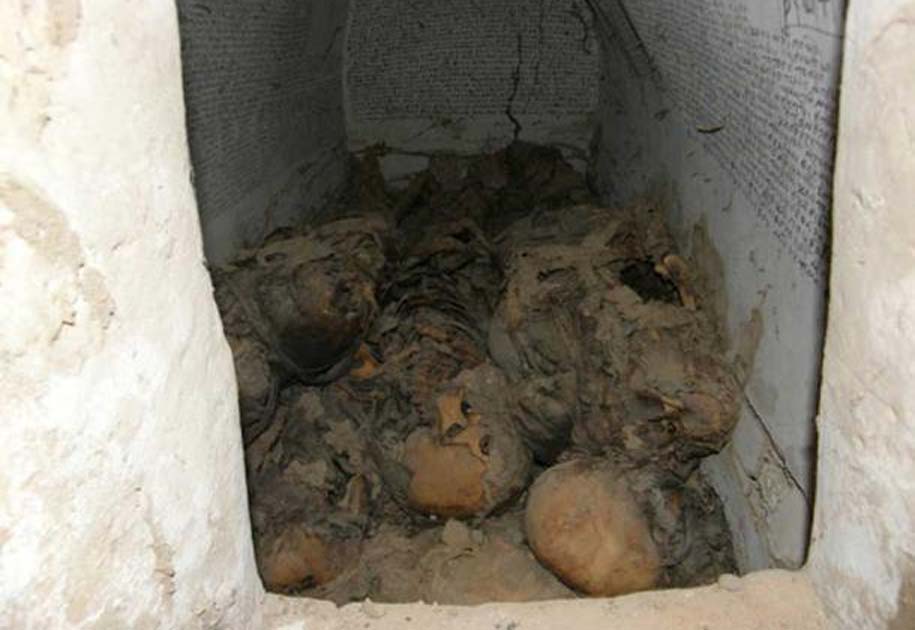Bodies of Ancient Monks Found in Sudan Were Stripped of Their Flesh Before Burial
More than 100 sets of ancient human remains have been excavated from four cemeteries near the ruins of a medieval Christian monastery in Sudan. Researchers were surprised to find that many of the skeletons had been stripped of their flesh before they were buried.
Monks Probably Had their Flesh Removed Shortly After their Death
As we reported last week, archaeologists from McMaster University announced recently the discovery of four large cemeteries near the remains of a medieval Christian monastery in Sudan. At least 123 individuals have been excavated so far, while some of the burials included corpses laid to rest in very odd ways. The skeletons found in one of the four cemeteries belonged to males, suggesting that the monks who lived in the nearby Christian monastery were buried there. The monks probably lived peacefully there about a thousand years ago, during a time when a series of Christian kingdoms prospered in the location. What’s quite shocking, however, is that many of the skeletal remains found there, showed signs of “defleshing.” Various marks on the bones suggest that the skin was probably removed shortly after death, even though the reason why remains unknown. Robert Stark who led the research team stated as Daily Mail reports, “All the indicators [are] that this happened when the bones were still quite fresh,’’ and added that it’s a possibility that the cut marks were made during a form of defleshing ceremony.

One of the burials found at the cemetery site near the monastery in Sudan. Robert Stark
Is “Defleshing” as Horrific and Shocking as it Sounds?
Some of you might have never heard the word “defleshing” before, but in reality most history buffs are probably familiar with this quite unappealing practice. In archaeology and anthropology, the term excarnation (defleshing) as it is scientifically known, refers to the practice of removing the flesh and organs of the dead before burial, leaving only the bones. Excarnation may be precipitated through natural means, involving leaving a body exposed for animals to scavenge, or it may be purposefully undertaken by butchering the corpse by hand. Defleshing of human bones has been observed in the archaeological record in various places around the world, including Turkey, the Philippines, Bolivia and Italy, all reported by Ancient Origins.

Defleshing is still practiced in Tibet where bodies are left for vultures to scavange. (CC BY-SA 3.0)
The first evidence of defleshing of human bones in Neolithic Europe was found in Italy. Archaeologists studying a cave in southeast Italy with remains of people who died 7,500 years ago, identified the first known cases in New Stone Age Europe of people scraping the flesh off of people’s bones after death. The researchers ruled out cannibalism and other violence, while they made sure that the cemetery had not been disturbed later. Furthermore, researchers found a 1,200-year-old skeleton of a young man in a cave in Nepal that had also been defleshed. The lead researcher of that body and other remains said in 2011 that evidence ruled out cannibalism on the part of the ancient Nepalese people.
Distinguishing Defleshing from Cannibalism
Despite defleshing’s purpose being quite a mystery for most historians and archaeologists (even though few of them have some interesting theories), they have no doubts when it comes to the differences between the practice of ritual excarnation and cannibalism. As experts suggest, cannibalized bones, in contrast to excarnated bones, usually exhibit telltale signs such as human tooth marks, broken long bones (to facilitate marrow extraction), and signs of cooking, such as 'pot polishing’. Another common way to identify the difference between the two, is to compare the tool marks and other cuts on the bones with butchered animal bones from the same site, with the assumption that cannibalized humans would have been prepared like any other meat, whereas excarnated bodies would be prepared differently.
Top image: Inside the 900-year old crypt found in Sudan in 2013. (Polish Centre of Mediterranean Archaeology Archives)



















